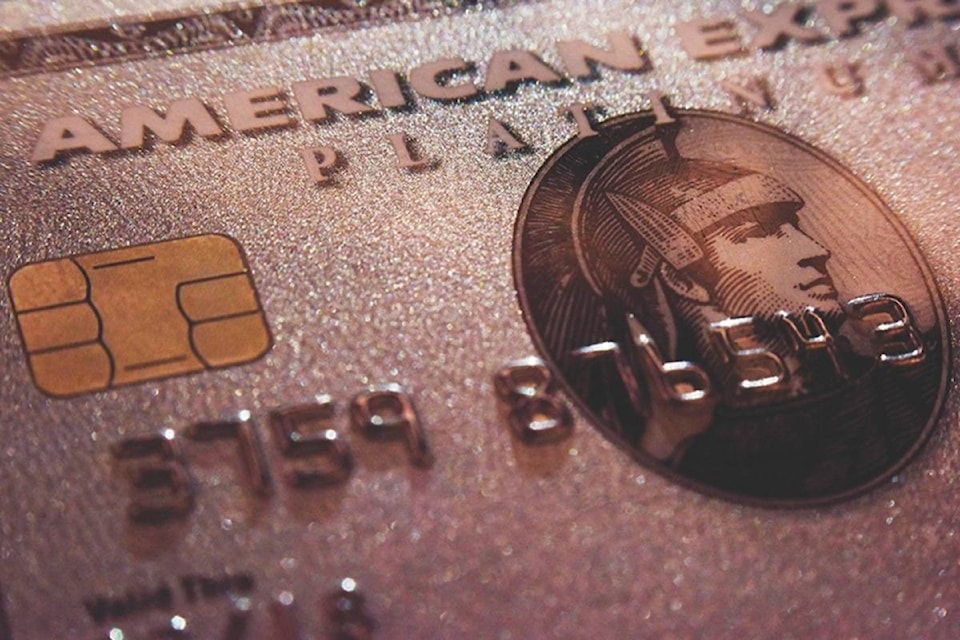NEW YORK — American Express said Wednesday that its second-quarter profit rose 21 per cent from a year ago, as the credit card giant saw more customers spending on its namesake cards and a much lower tax rate.
But it had to set aside more money to cover potential bad loans, and saw its delinquency rate rise noticeably. It’s a potential sign that some of American Express’ customers — typically the most creditworthy in the industry — are struggling to pay their bills.
Shares of American Express fell 3 per cent in after-market trading.
The New York-based company said it had second-quarter profit of $1.62 billion, or $1.84 a share, up from $1.34 billion, or $1.47 a share, in the same period a year earlier. AmEx’s results beat, albeit barely, expectations of industry analysts who were looking for AmEx to earn $1.83 a share on average, according to survey by FactSet.
AmEx’s results reflected the company’s usual strengths in recent quarters. It added more customers — 2.9 million new cards were issued compared to a year ago — and spending by its card holders was up 10 per cent from a year earlier.
There were some figures in AmEx’s results that gave investors pause, however.
AmEx’s charge off rate — the percentage of loans that the company has classified as unrecoverable — stood at 1.8 per cent in the quarter. While that’s still among the lowest in the industry, it is up from 1.5 per cent a year earlier. AmEx said it set aside $806 million, up 38 per cent from a year earlier, to cover for potentially bad loans.
For decades, American Express was a company whose primary business was to issue charge cards, which don’t revolve a balance and had to be paid off at the end of each month. But recently, in a move to boost revenue and diversify its revenue streams, AmEx has been promoting to its customers the ability revolve a balance, even on its traditional products like the Platinum Card.
Total loans carried by AmEx card customers stood at $75.4 billion last quarter, the company said, up from $67.9 billion a year earlier.
In previous quarters, AmEx executives have said they expected delinquencies to rise as the company expands its lending business. In a conference call with investors, AmEx financial chief Jeffrey Campbell said “we don’t see anything in the performance” of the credit cards that would suggest some more substantial change in customer behaviour.
While AmEx can earn interest on those revolving balances, there’s a risk that its customers may run up higher balances and struggle to repay. That appears to be happening. The company’s worldwide write off rate for loans was 2.1 per cent in the quarter, up from 1.8 per cent a year earlier.
Last quarter American Express won a major antitrust lawsuit that went all the way to the Supreme Court. In a 5-4 vote, the Supreme Court ruled that AmEx did not violate antitrust laws by requiring merchants not to steer potential customers to other forms of payments. AmEx is typically the most expensive form of payment for a merchant to accept.
